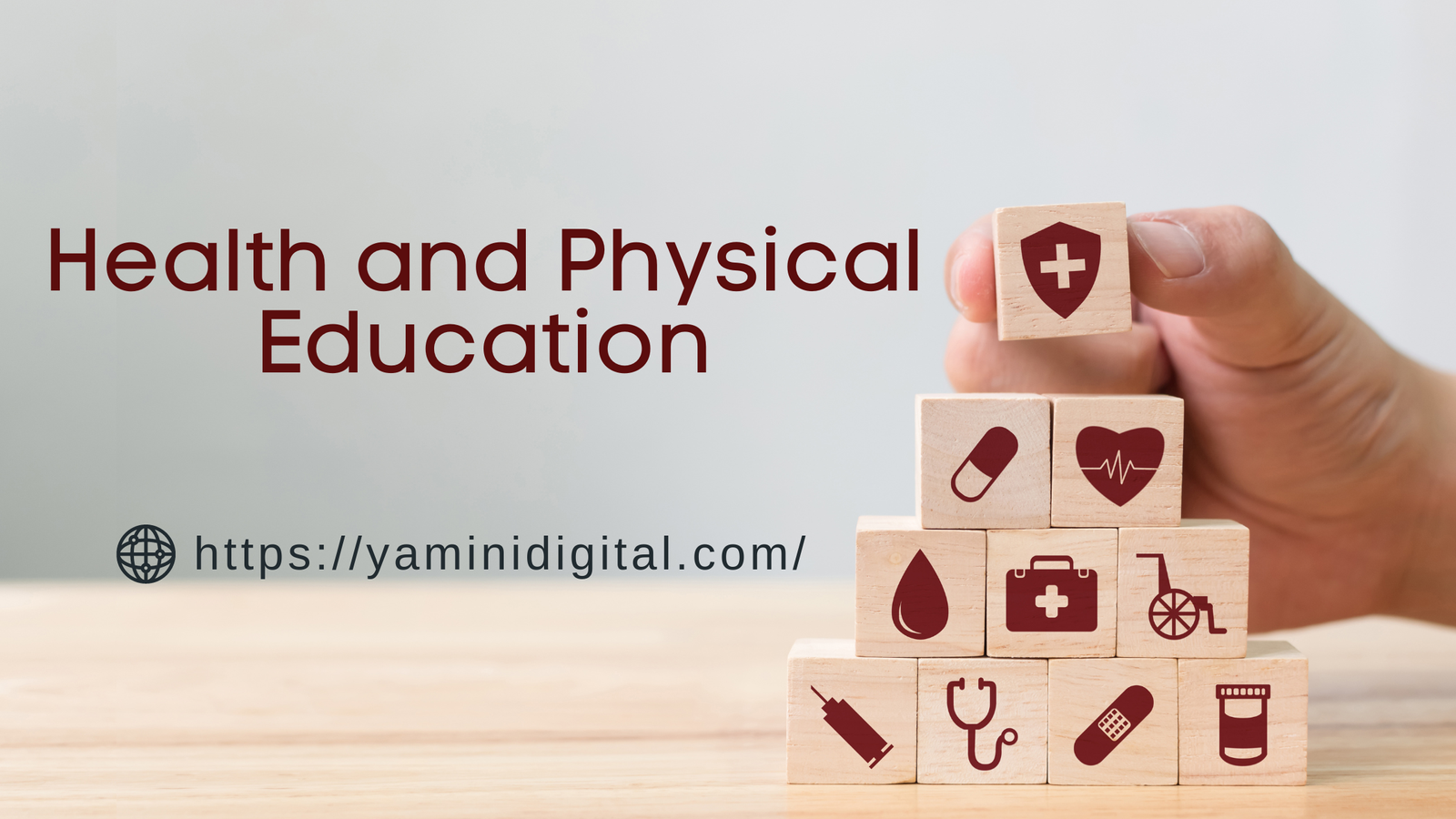Introduction
The Health and Physical Education course is an introduction to the practices, principles and concepts of Health and Physical Education. It is intended to help students develop the knowledge, skills, and understanding required to develop a healthy lifestyle.
This course is an introduction to the practices, principles and concepts of Health and Physical Education. It is intended to help students develop the knowledge, skills, and understanding required to develop a healthy lifestyle.
This course is an introduction to the practices, principles and concepts of Health and Physical Education. It is intended to help students develop the knowledge, skills, and understanding required to develop a healthy lifestyle.
- The course aims at providing students with an understanding of their physical state as well as their emotional state; how they can influence their own health; what factors influence health; how we can improve our health through exercise programs (including nutrition), prevention strategies such as smoking cessation or alcohol dependency management, etc.
- Students will learn about principles that govern human movement including strength development/conditioning, flexibility exercises, and stretching exercises for flexibility purposes alone without any movement involved!
What are we expected to do?
A teacher of physical education is responsible for teaching students how to be physically active. They also teach students the importance of health and fitness, nutrition, and mental health.
The role of a health educator is similar to that of a physical education teacher but focuses on providing information about healthy lifestyles rather than physical activity.
A health educator is responsible for informing students about the importance of good nutrition and healthy lifestyles. They may also teach students how to manage stress and other mental health issues, as well as how to prevent or treat illnesses such as diabetes and asthma.
Critical thinking skills
Critical thinking is the process of thinking about the world and how it works, in a way that is not influenced by our emotions, our assumptions, or our beliefs.
It can be used as an intellectual tool to analyze information, evaluate arguments for or against a particular point of view and find out what makes good evidence (or bad). It also helps us to understand others’ perspectives on issues when they disagree with ours.
Critical thinking skills help us to make good decisions based on facts rather than personal opinion; they give us the ability to tackle complex problems or situations where there are many different perspectives involved; and they enable us to think critically in order to create change within organizations or communities
Use data/research
When you’re writing, it is important to use data or research. You can use this information to support your argument, point of view, and conclusions.
To begin with: Data can be used as evidence that supports or refutes a certain argument. For example: “The result of this study shows that students who participate in physical education classes have more energy than those who do not.”
Data can also be used as an indicator for what type of conclusion needs to be drawn from the results of an experiment or survey (e.g., if there was no difference between two groups when asked about how much time they spent watching television). The following example illustrates this point: “Students who watched more television had lower grades than those who watched less.”
Participate in open discussions and debates
Participate in open discussions and debates.
- Understand the importance of expressing your opinion, as well as being able to defend it.
- Listen carefully, so that you don’t miss anything that might be important for your own understanding of the topic at hand.
- Be open-minded when listening and forming arguments with others in class discussions or during debates outside of school hours (e.g., on social media).
It’s essential to learn how to have productive class discussions and debates. Understand the importance of expressing your opinion, as well as being able to defend it. Listen carefully, so that you don’t miss anything that might be important for your own understanding of the topic at hand.
Be able to communicate thoughts and ideas clearly, concisely and with appropriate examples
When it comes to communicating ideas, it’s important to use appropriate examples and evidence. You should be able to explain your ideas in a clear and concise manner.
You can also use research, data, and evidence as support for your arguments.
In addition, when communicating your ideas, it’s important to use the right words and phrases. You should be able to express yourself in a way that makes sense and is easy for others to understand.
You should also be able to communicate your ideas clearly and concisely. You can use research, data, and evidence as support for your arguments. In addition, when communicating your ideas, it’s important to use the right words and phrases.
Work hard, earn good marks
To be successful, you’ll have to work hard. You will need to think critically and creatively while working in teams and groups. You can also expect challenges as you learn new skills and become part of a larger community.
The best way for students to prepare themselves for these types of experiences is through physical education classes like P.E., which teach them how to work together as well as how to be part of a team or group (both inside and outside the classroom).
Conclusion
This course is an introduction to the practices, principles and concepts of Health and Physical Education. It is intended to help students develop the knowledge, skills, and understanding required to develop a healthy lifestyle.
Read More:
THINGS TO KNOW ABOUT EDUCATION LOAN BEFORE APPLYING
